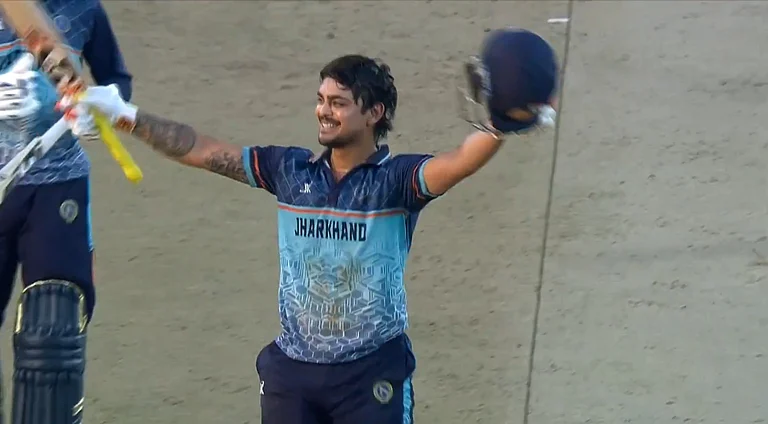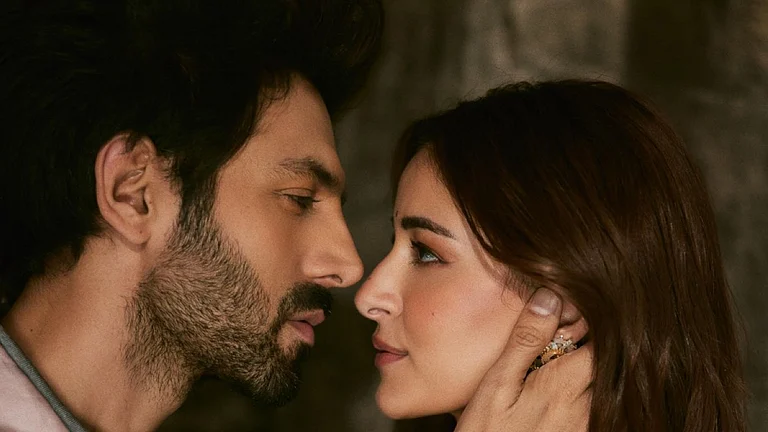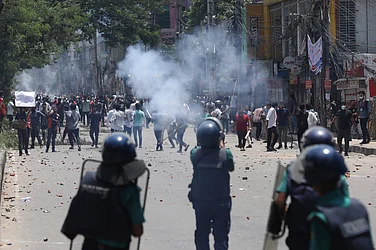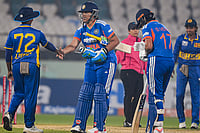In Gujarat and outside it, for politically active, upwardly mobile youth of a certain worldview—aspiring, consumerist and yet traditional in a middle-class way—Brand Modi just rocks. “He’s that rare leader with a mind of his own. And his credibility speaks for itself,” says Amar Govindarajan, a young IT professional from Coimbatore. Modi, it must be conceded, has crafted an effective strategy to sell himself, and his hyperactive propaganda machine has succeeded in building him up as a Dabaang-style hero.
Social scientist Ghanshyam Shah says Modi appeals to middle-class youth because what he offers matches their aspirations. They brim with aggressive defiance, self-centredness, chauvinism and a love for fast-paced development. This is what powers their confidence and enterprise. This is what Modi has carefully learnt to charge them up with.
Niranjana Narayanan, an IIM student, says, “He’s quite unshakeable and uses that spark of modernism to get his policies across and create manic patriotism.” It’s not just urban youth; even those in the villages are impressed. In urbanised Gujarat, the city influence permeates the smaller towns and villages. “At Ahmedabad’s malls, you’ll find that almost one-fourth of the visitors are from the towns and villages,” says Achyut Yagnik, a noted social scientist. “Modi knows just how to rope them in.”
For Tejasvi Surya, a law student from Bangalore who runs the Arise India Movement, the Modi model is the only way. Good education, well-paying jobs and security, he says, are the prerequisites for national success. Fed up with Mayawati, Laloo and Mulayam, he sees Modi as a game-changer of sorts.
To what does Modi owe his overwhelming influence? The absence of an alternative surely plays a role. Equally so, young people seem in thrall of a leader who’s markedly different in speech and action. By projecting himself as a no-nonsense authoritarian, Modi has pitched himself in contrast to the usual image of the Indian politician—corrupt, and ineffective, says Subrata Chakraborty, managing director of Brand Curry Communications, Delhi. “His out-of-the-box thinking of possibilities is what the youth define as creative.”
Many are unable to explain Modi’s appeal outside Gujarat. Rajeev Bhargava, a professor at the Centre for the Study of Developing Societies, Delhi, says it’s only those youngsters who see no merit in democracy, who are simplistic or individualistic and see social diversity as an impediment who see relevance in Modi’s policies. And Shah points to the deception in building Modi up: “They haven’t seen the Gujarat of the 1980s and have been brainwashed into believing that everything in Gujarat has been achieved by him. The poor, the welfare state—these have never been part of Modi’s vision.”
The BJP has been in power in the state since 1995. Those who started voting in recent years haven’t seen Gujarat under any other regime. The Modi model is all they know; they say it works. His young fans outside Gujarat think the 2002 riots are unpardonable, but it’s time to move on and Modi is helping Gujarat do just that. “The last 10 years in Gujarat have been prosperous and riot-free. Which other state has recorded such progress?” asks Manohar Sitaram, a design engineer from Bangalore.
After Modi’s victory, analysts speak of the need to assess him afresh, without demonisation. Modi should be assessed “correctly and dispassionately”, says Angshuman Sarkar, who teaches sociology at Presidency College, Calcutta. But is it possible—and is it right—to forget a horrendous communal riot and focus only on the developmental present? Prof A.S. Mathew, who teaches humanities at IIM Kozhikode, diagnoses why it doesn’t seem to matter to the young: “The young have no idea of history, are becoming overtly religious and have stopped thinking critically.”


























